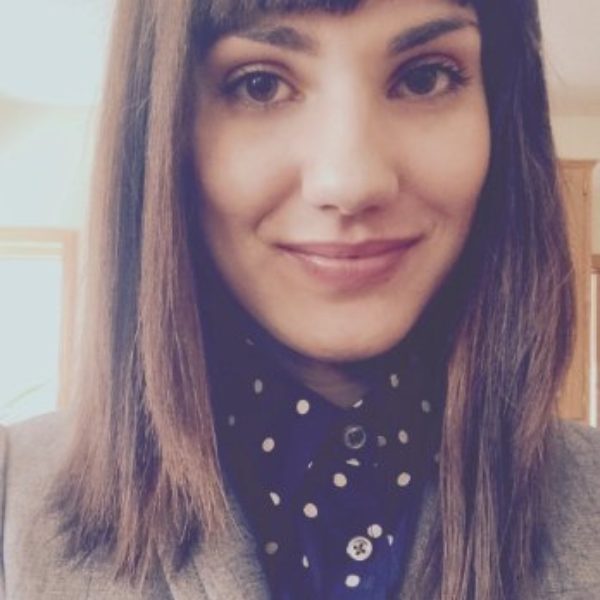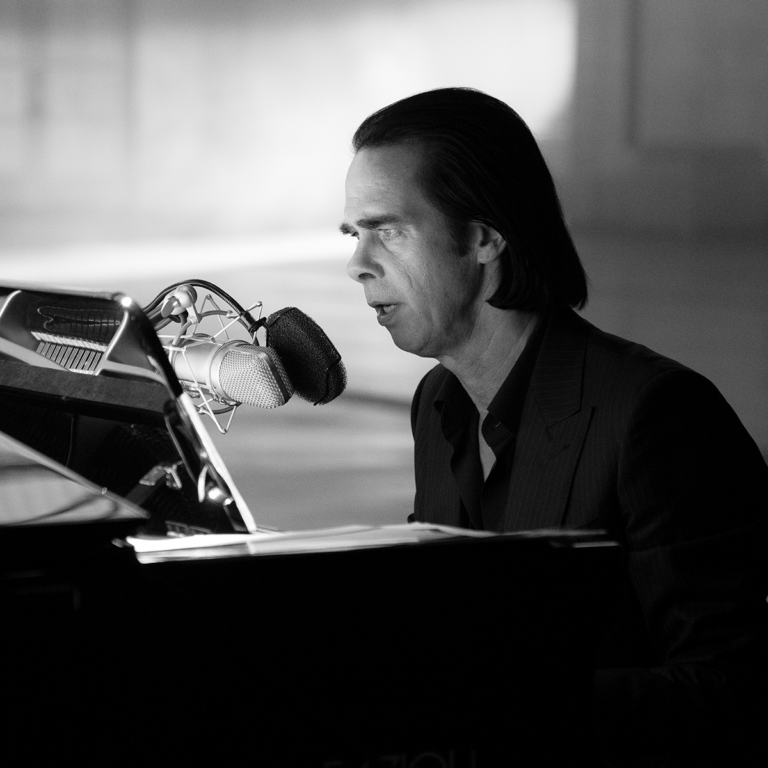Freaky Folk Duo CocoRosie on the Interaction of Light and Dark, and Their Own Spirituality
CocoRosie’s childhood, in part, was what shaped the charismatic freaky folk group they are today. Sisters Bianca “Coco” and Sierra “Rosie” Casady went on vision quests with their father, a Native American shaman, and created beyond studio walls with their mother as an artist and musician. Experiencing CocoRosie’s music is reminiscent of growing up reading R.L Stine’s Goosebumps novels under the covers while your beloved Furby sings you a sweet lullaby. It is both unnerving and comforting.
In the video “Lemonade”, their characters wear colorful mustaches and exquisite 19th-century-inspired gowns while strolling through footage of a hauntingly beautiful Victorian-style mansion. The interaction between light and dark themes resonates deeply in their work, as Sierra Casady notes:
“In general, light and dark are something to balance one another in life, and as children we have not yet decided and differentiated which things are light and dark so there is this murky experience of what’s happening, we haven’t decided what is good and bad yet.”
Lyrically, “Lemonade” suggests the sisters explore their parent’s divorce and other perceived hardships from the past, as their parents were, “seduced by the light of butterflies.” This experience may not have induced judgement as children, but through their work it arouses a convoluted interpretation of memory. The juxtaposition of tragedy and nirvana is one way of experiencing their project. As Bianca points out in the clip above:
“We do a lot of digging around in our writing process, and it’s interesting the more you dig around the more memories are born which have been blanked out in a way. Just being sisters and having shared that childhood, we’ve been able to kind of fill in the blanks for each other too, and it’s interesting what a different set of memories we retain.”
I discovered a rare beauty in their awareness of their personal journey through the bodies of musicians. Enraptured in every word, I’m drawn in by Bianca’s sense of comfort with mystery:
“I feel pretty strongly that the mysterious aspect of being human, you know really not knowing what happens after death and things like that, I feel so comforted by the mystery of it. And I think religion trying to define these very, which for me are completely undefinable human realities, feels oppressive it feels false and it also cuts the individual off from discovering their own truth from, you know, building their own mythology. And also having their own sense of spirituality without having to have like a mediator.”
Beyond CocoRosie, the two have kept busy utilizing other artistic mediums as a form of social activism. Bianca’s latest project is an arts magazine, G.A.G. (Girls Against God), a radical feminist critique of religion’s oppression of women and the interconnectedness of environmental degradation. More recently, Bianca and Sierra along with a collective of inspired activists started up Future Feminists, a group that fosters advocacy for female empowerment.
From my studies as a Religion major, I have often found sanctuary in feminist and womanist theologies. Both baffling and brilliant, feminist Mary Daly spoke to similar issues asserting that, “If God is male, then male is God.” Ms. Daly calls for an “exodus” of patriarchal religious devotion and aims to create a new consciousness of spiritual practice beyond the dualities of gender. Bianca and Sierra Casady also adopt a similar rhetoric through their art and music as they challenge the notion of a male God (the image of Jesus comes up frequently in their work) and patriarchal interpretations of religion. As Sierra shared on religion:
“For us our artwork has been very cathartic in the process of figuring out how we can loosen the grip of religion, you know, around our minds just being in society and having weathered some of the effects.”
Grouped in the freaky folk genre, CocoRosie joins other big names in the movement such as, Joanna Newsom, Devendra Banhart, and Tune-Yards. Freaky folk is commonly characterized by unusual sounds and lyrical themes rooted in avant-garde and psychedelic music. The Casady sisters married their childhood identities of Coco and Rosie in a small flat in Paris, while experimenting with acoustics, children’s toys, and different vocal stylings. Over time, CocoRosie has evolved into a collective of artists including the talented beat boxer, Tez. Sierra elaborates on what has kept CocoRosie distinguished in the freaky folk movement:
“We continue to be polar opposites somehow. I think that this is what is the reason, you know, in that it does continue to be interesting is that we challenge each other so much.”
Bianca and Sierra have very different voices that derive from different places. Bianca tends to take on an erratic childlike tremor while Sierra performs like a disciplined Italian prima dona. And yet the two voices blend together to create a harmonious sound. Sierra’s soulful operatic tone anchors the melody, while Bianca brings lyrical conviction with her poetic origins.
My pre-existing notion that Bianca and Sierra Casady were perpetually functioning under this far out, freaky, and brilliant reality was debunked as soon as I saw them relaxed in the casual oversized sweatshirt and overalls. They were so … collected, inquisitive, and gentle amidst a chaotic tour bus housing foreign films, Whole Foods grocery bags, and strewn notebook paper. Sierra casually concluded the interview with a playful high five and an inquiry about the best Ethiopian restaurants in the Cedar-Riverside area of Minneapolis.
CocoRosie performed for a sold-out show at The Cedar Cultural Center The transformation from their casual pre-concert attire into the different character roles they lyrically explore was enticing. With each mask, every blacked out tooth, and tutu it was revelatory to me that their live performance is an invitation for the audience to participate in the ritual celebration of mystery.
The interaction of light and dark themes even played out during the concert. In the song, “Ana Lama” (Arabic for “I am Lama”), they unravel the experience of the young Saudi girl, Lama al-Ghamdi who was sexually abused and then killed by her father, a prominent Islamic religious preacher. Bianca sang, “I thought the father was the protector was the creator but you are none. Although my bones you may have shattered. It doesn’t matter, ’cause I am whole.” In a way, it was a eulogy. Their recollection of an innocent child’s tragic death served as a requiem of Lama’s resilient soul. It was heartbreaking to hear a narration of this young girl’s tragic death, but honoring her youthful soul was humbling.
Later in the show, a group of little girls and a young boy with glitter on their faces went on stage and began singing alongside Bianca and Sierra. In mid-song, Sierra picked up one of the girls, laughing. Children? A CocoRosie performance really is a playground for everyone! I was smiling from all of the excitement.
Growing up and seeing beyond the “murky” experience of childhood made me quite aware that fantasy and mysticism seem to be a distant memory as well. Whenever I listen to CocoRosie I experience a reconstruction of that former reality. These sisters have discovered a creative way to challenge injustices in religion and patriarchy by mending trauma with the beauty of mystery. With a dash of glitter and freaky folk, CocoRosie is building an inclusive spiritual consciousness on record and in concert.


Share your reflection